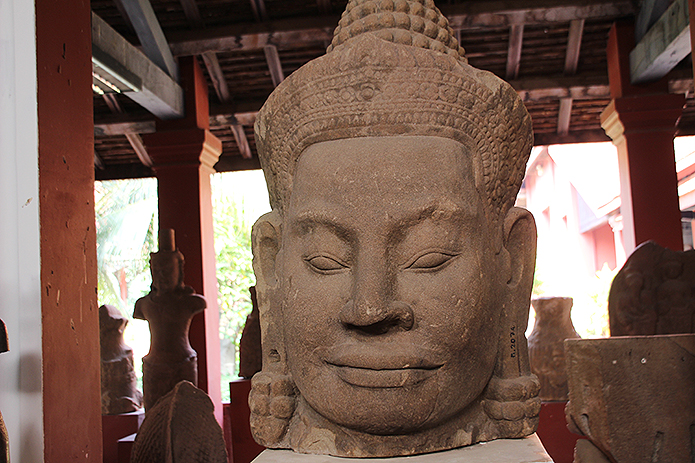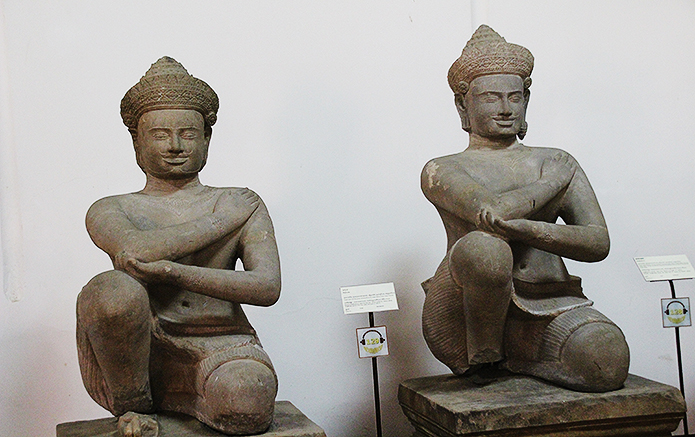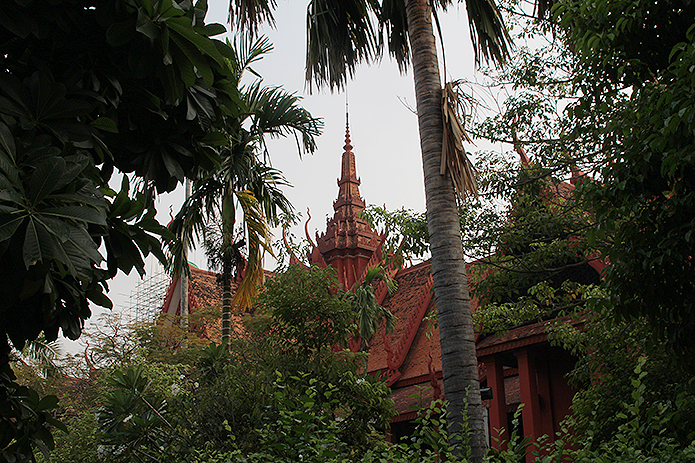Bat Guano Sprinkles on their Heads, but the Ancient Statues Keep Smiling
PHNOM PENH, Cambodia, Aug. 7 1998 : The mystical statues of ancient Angkor, with their enigmatic smiles, sit in the damp and almost empty National Museum here, enveloped in an ethereal twittering.
It is the twittering of millions of tiny bats, roosting under the leaking roofs and eaves of the museum — the most dangerous threat to the preservation of these ancient treasures, but also one of their chief benefactors.
Since the days of the Khmer Rouge 20 years ago, when the museum was abandoned and the bat population exploded, its curators have sought ways to drive them out. They are trying again today, but they are meeting resistance from people who say the museum needs the bats.
There are sounds of heavy lifting in the museum’s musty halls these days as men with a mechanical winch heft the last of the statues back onto their pedestals after a triumphal yearlong tour of the grandest museums of France, the United States and Japan.

They returned unharmed from their journey, said the museum’s director, Khun Samen. But here at home they are in peril. Bat guano is killing them.
In flecks and black crumbs and noxious dust, it falls and flutters constantly from the false ceiling that encloses the upper reaches where the bats roost. It mixes with leaking monsoon rainwater and seeps like coffee stains through the split and sagging wooden ceiling and down the museum’s walls.
It accumulates — filled with tiny worms — on the elaborate carved headdresses of the statues, on their shoulders, their folded knees and the creases of their garments, where it turns to sticky and corrosive slime and eats into the sandstone and bronze.
It fills the air with an acrid, ammoniac stink that mixes here and there with the sweetness of incense and jasmine that museum workers place reverently before the holiest of the Buddhist and Hindu statues.

Two statues
”The statues are all right as long as we sweep,” said Mr. Khun Samen. ”But if we stopped sweeping, they would be buried.”
At dawn and at noon, museum workers sweep and dust, gathering — and saving — more than 20 pounds of bat guano each day.
Periodically the more agile of the workers cover their faces with cotton cloths and climb above the ceiling, where they gather another half a ton of bat guano a month, said the museum’s deputy director, Oun Phalline.
Mr. Khun Samen is determined that the time has come to put an end to all this.
”I love bats too,” he said, as if anticipating a backlash. ”But in the whole world there is not another museum with bats. In the Louvre and the Metropolitan, there are no bats. I think in your own home you would not want bats.”

The museum
He is near an agreement with a French charitable organization to build an uncompromising new plaster ceiling and seek ways to keep out the bats, perhaps using wire mesh.
”Let them go live somewhere else,” said Bernarde Porte, who heads the museum’s restoration and conservation department. ”Let them live at the Royal Palace.”
But things are not that simple. The museum needs the bats. It receives no Government funding in this poverty-ridden nation, and it is broke. Its employees have not been paid for two months. And bat guano sells as fertilizer at the central market for 18 cents a pound. For years the museum has been earning more than $300 a month from the guano trade, which it uses to subsidize its operations and keep its employees from starving.
”We use it to buy office supplies and cleaning supplies,” said Mrs. Oun Phalline. ”And part of it we give to the staff to support their living expenses.”
A museum guide, Mao Vuthy, said the sale of bat guano had helped support his family for nearly 20 years.
”You can eat the bats too,” he said eagerly. ”They can be fried like chicken. They are good with wine or beer. I will be sorry to lose the bats.”
Copyright The New York Times